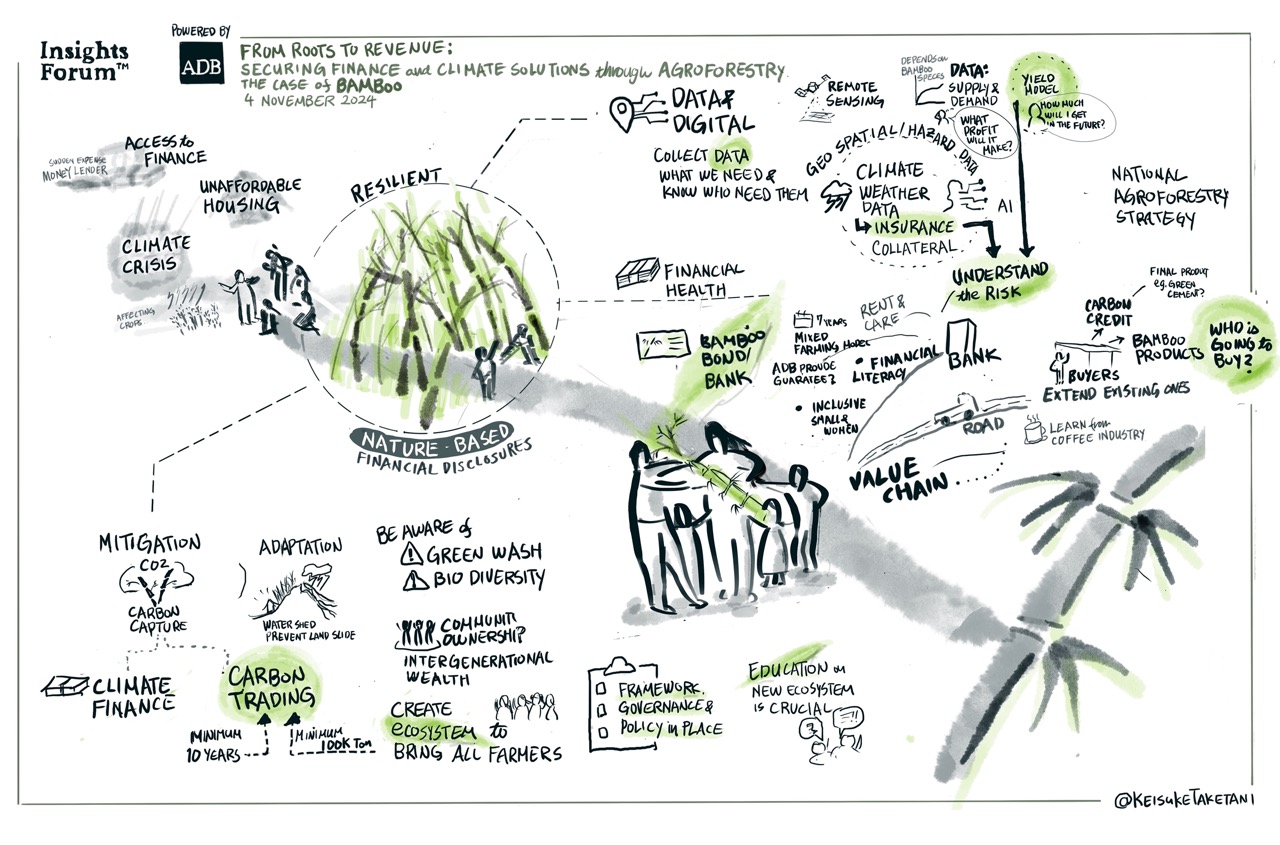From Roots to Revenue: Securing Finance and Sustainable Solutions Through Agroforestry The Case of Bamboo

 The objective of this workshop was to build on the insights and innovative ideas from the Singapore Fintech Festival (SFF) design thinking session on financing bamboo agroforestry (Development Asia for the proceedings). In this second installment, we focused on practical implementation, exploring real-world case studies from the Philippines to understand better the challenges, opportunities, and financial requirements for scaling the bamboo value chain.
The objective of this workshop was to build on the insights and innovative ideas from the Singapore Fintech Festival (SFF) design thinking session on financing bamboo agroforestry (Development Asia for the proceedings). In this second installment, we focused on practical implementation, exploring real-world case studies from the Philippines to understand better the challenges, opportunities, and financial requirements for scaling the bamboo value chain.
Using these case studies—alongside the findings from the SFF workshop—we will lay the groundwork for developing pilot projects that demonstrate the socio-economic and environmental impact of financing bamboo development.
The goal is to identify scalable, impact- and investment-ready solutions that can be implemented across the Philippines and replicated in other ADB Developing Member Countries (DMCs). Through collaborative discussions, we aim to position bamboo agroforestry as a secure, bankable, and tradable asset—one that contributes to the net-zero transition, drives sustainable economic growth, and improves livelihoods across the region.
Reading Material:
Insights from Singapore Bamboo Workshop
ADB Bamboo Social Impact Study - Consultant's Report
This focused design thinking workshop, curated by the ADB, aimed to consider mechanisms to scale high-impact agroforestry. Using bamboo as a case study for how agroforestry might achieve affordable, disaster-resilient housing, climate mitigation, and financial health for the vulnerable, this session examined how a pilot project in the Philippines might be designed, scaled, and replicated globally.
Key Discussion Points:
- How can bamboo be effectively integrated into financial systems to become a secure, bankable, and tradable asset, thereby enhancing access to credit for vulnerable populations in the Global South?
- What role can geospatial data and AI technology play in improving the valuation and risk assessment of bamboo plantations, and how can these innovations facilitate investment in sustainable housing solutions?
- How can collaboration among industry leaders, policymakers, and climate action groups enhance the scalability of successful bamboo agroforestry models and ensure they meet economic and environmental goals?
- How can alternative data, such as geocoding and geospatial data, combined with AI technology enhance financial health?
This groundbreaking session brought together industry leaders, policymakers, technologists, and climate action groups to explore how geocoding, geospatial data, AI technology, fintech innovations, and climate finance can meaningfully solve the challenge. By enabling bamboo to become a secure, bankable, and tradable asset, we can achieve a more inclusive financial ecosystem that supports sustainable economic development and climate resilience.
Related Documents:
From Roots to Revenue: Securing Finance and Climate Solutions Through Bamboo Agroforestry
ADB Blog: Five Ways Bamboo Can Revolutionize Finance, Housing, and Sustainability
